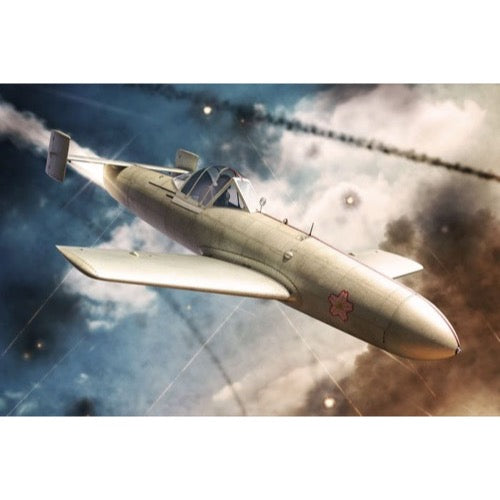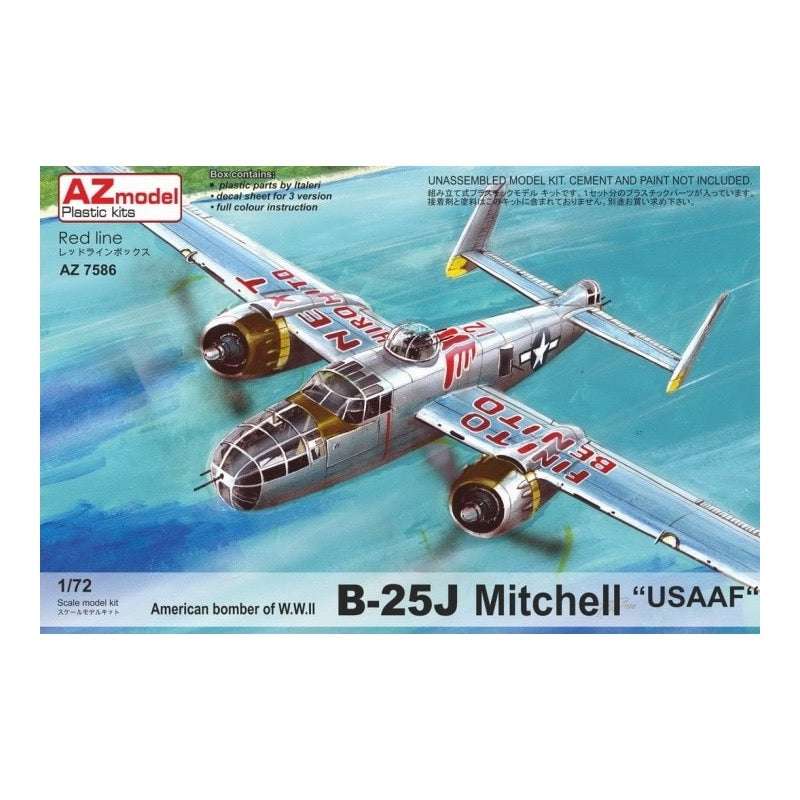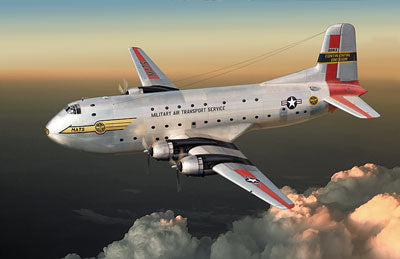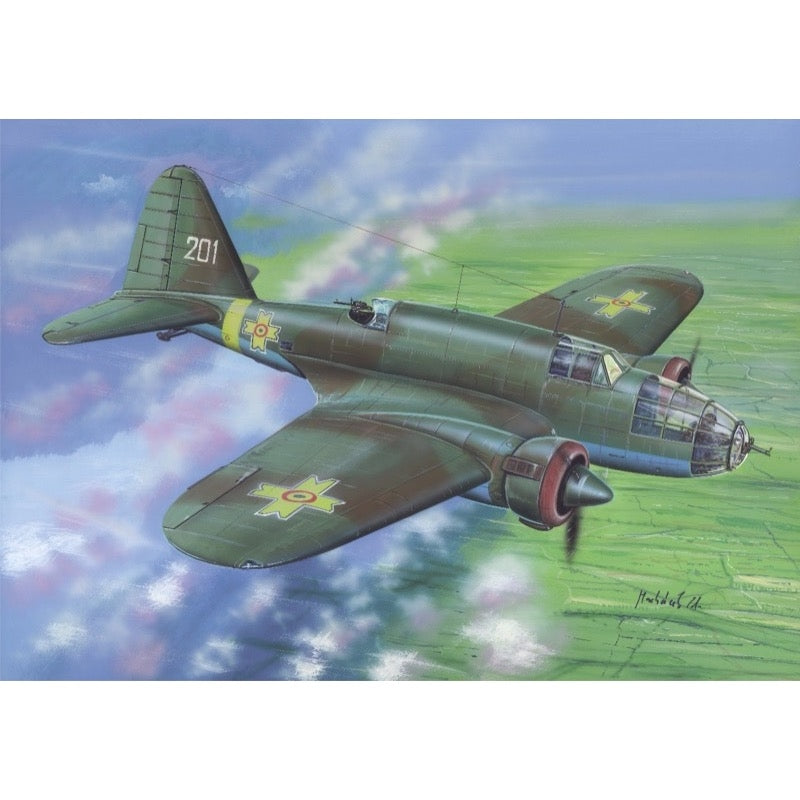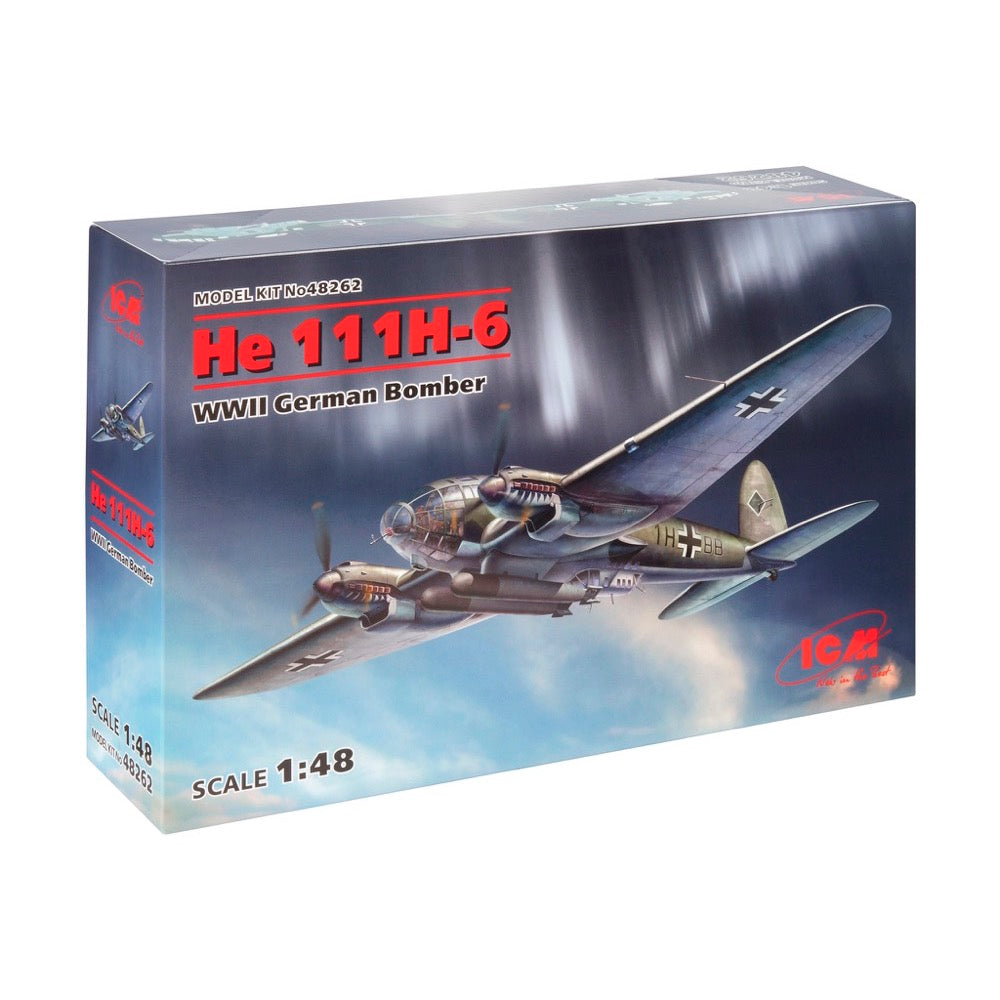
ICM 48262 1/48 Heinkel He 111H-6 WWII German Bomber
50.00
$
<p>In the beginning of 30s it was appeared in the world an idea of high-speed bomber that could outstrip contemporary fighters. One of the objectifications of this conception became the twin-engine bomber He 111 designed by a German Heinkel Flugzeugwerke AG company.</p>
<p>Since the May of 1941 it were produced He 111H-6 planes with liquid-cooled Jumo 211F-2 engines of increased power, with VS 11 wooden wider horde propellers and more powerful armament. This variant could carry SC 1800 kg bombs or two LT F5b torpedoes externally. </p>
<p>The He 111H-6 was the most produced variant of Heinkel’s medium bomber. It were produced approximately 1800 aircraft up to the end of 1942. He 111H-6s saw service on all fronts as level bombers, torpedo bombers, reconnaissance aircraft, transports, and mine layers.</p>
<h3>Markings</h3>
<ul>
<li>Не 111Н-6, 3./KG 26, Norway, Summer 1941.<br>
</li>
<li>Не 111Н-6, Stab 1/KG 26, Bardufoss, Norway, July 1942.<br>
</li>
<li>Не 111Н-6, 8./KG 53, Poland, June 1941.<br>
</li>
<li>Не 111Н-6, 7./KG 27, Russia, November 1941.</li>
</ul>
<h3>Specifications</h3>
<ul>
<li>Model size (length x width): 344 x 471 mm<br>
</li>
<li>Box size: 410 x 260 x 100 mm<br>
</li>
<li>Number of details: 325</li>
</ul>
<!---->
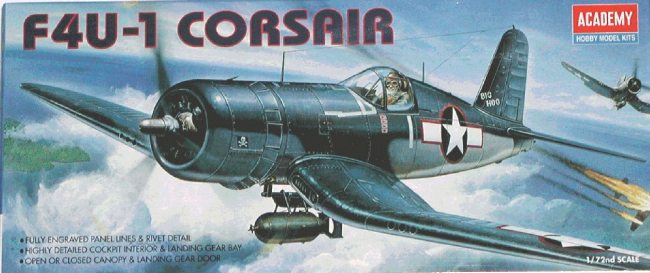
Academy 12457 1/72 F4U-1 Corsair
9.00
$
<p>The revolutionary design of the F4U Corsair was created in 1938 in response to the request of the US Navy to design a high-speed fighter stationed on board aircraft carriers. Chance Vought took on the challenge, with the goal of fitting the most powerful of the available engines (i.e. the Pratt-Whitney Double Wasp engine) into the smallest possible airframe. The key was to place the clunky landing gear in the inverted, crooked wings that became the hallmark of the aircraft. The flight of the prototype took place on May 29, 1940, and the US Navy received its first serial Corsair on July 31, 1942. Technical data (version F4U-4): Maximum speed: 731 km / h, speed of climb: 19.7 m / s, maximum ceiling 12649 m, maximum range: 1115 km, armament: fixed - 6 M2 machine guns, caliber 12, 7mm and 4 20mm Browning cannons, sling - up to 1800 kg of bombs.</p>
<p>This is an injection-plastic jet aircraft model kit.</p>
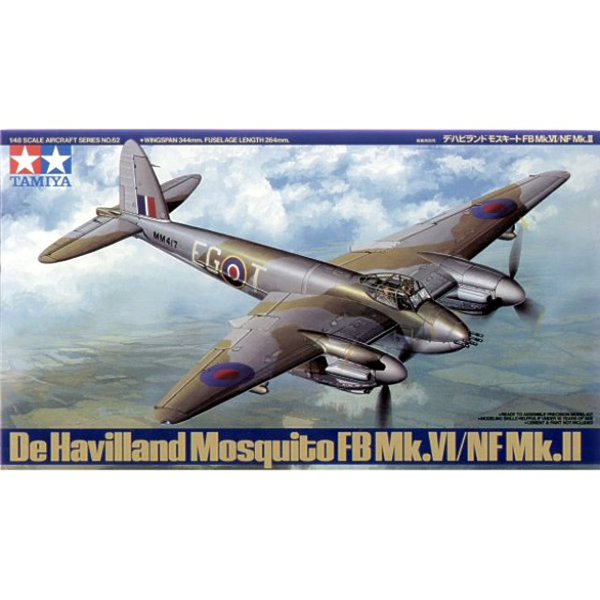
Tamiya 61062 1/48 Mosquito FB Mk.6 / NF Mk.2
18.00
$
<h3>The Wooden Wonder</h3>
<p>Due to its nearly all-wood construction, the de Havilland Mosquito was initially conceived as a fast, unarmed bomber and went on to serve in that and many other roles during WWII.</p>
<p>This kit depicts the NF Mk.II nightfighter and FB Mk.VI fighter-bomber variants which were introduced in Spring 1942 and Spring 1943 respectively.</p>
<h3>Features</h3>
<ul>
<li>
<p>Parts are included for the NF Mk.II's nose and wing-mounted radar antenna</p>
</li>
<li>
<p>500lb bombs and rockets for the FB Mk.VI.</p>
</li>
<li>
<p>Details for the fuel tank and 20mm cannon magazines</p>
</li>
<li>
<p>Two pilot figures and three marking options are included</p>
</li>
</ul>
<h3>Specifications</h3>
<ul>
<li>
<p>Length: 205mm</p>
</li>
</ul>
<p> </p>
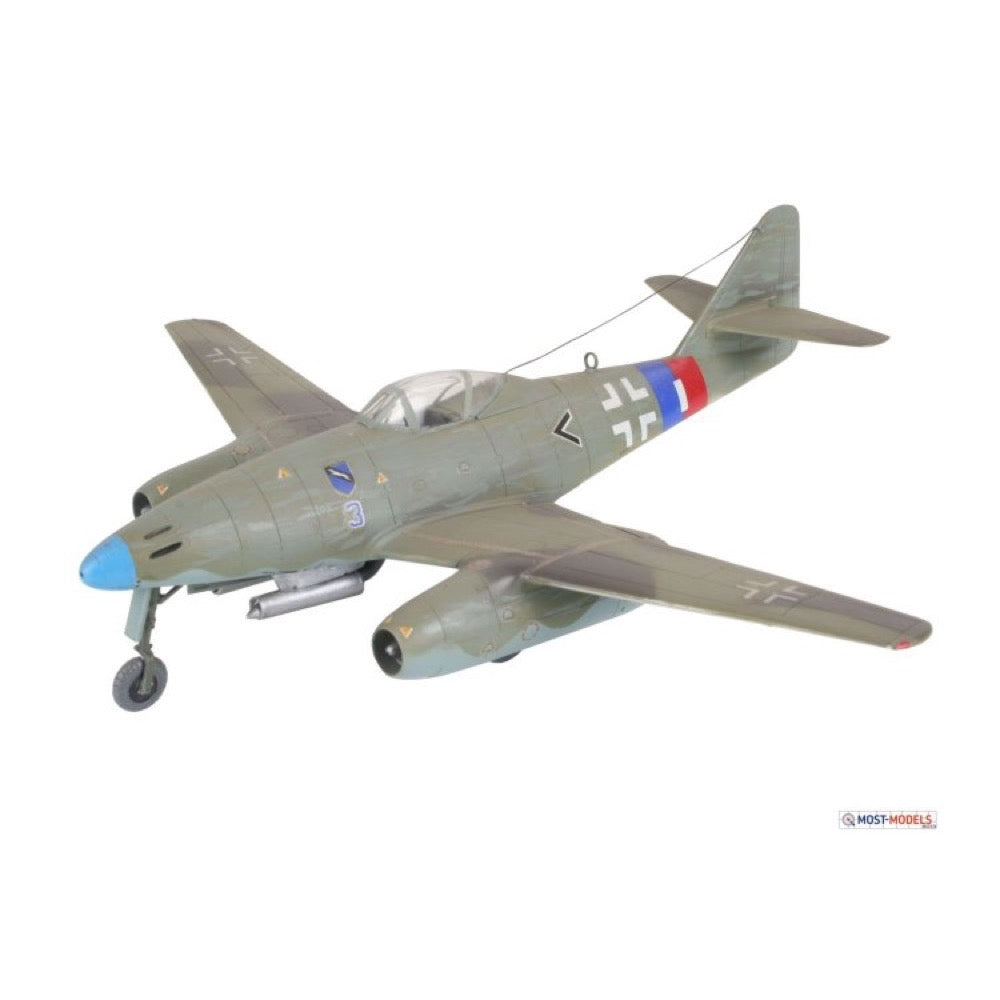
Revell 64166 1/72 Messerschmitt Me 262 A1a Model Kit Set
17.00
$
<p>The Me 262 was the world's first mass-produced jet fighter/fighter-bomber and was deployed from June 1944. With a top speed of 865 km/h at an altitude of 6,000 m, it operated against Allied bombing squadrons.</p>
<h3>Specification</h3>
<ul>
<li>Model in scale 1:72</li>
<li>very detailed plastic kit</li>
<li>unbuilt, unglued and unpainted</li>
<li>Skill level: 4</li>
<li>Length: 146mm</li>
<li>Width: 173mm</li>
<li>Number of parts: 56</li>
</ul>
<h3>Includes</h3>
<ul>
<li>Plastic model kit (not assembled)</li>
<li>Illustrated, multilingual assembly instructions</li>
<li>Decals</li>
<li>Basic colors (Revell Aqua Color)</li>
<li>Adhesive (Revell Contacta Professional Mini)</li>
<li>Paint brush</li>
</ul>
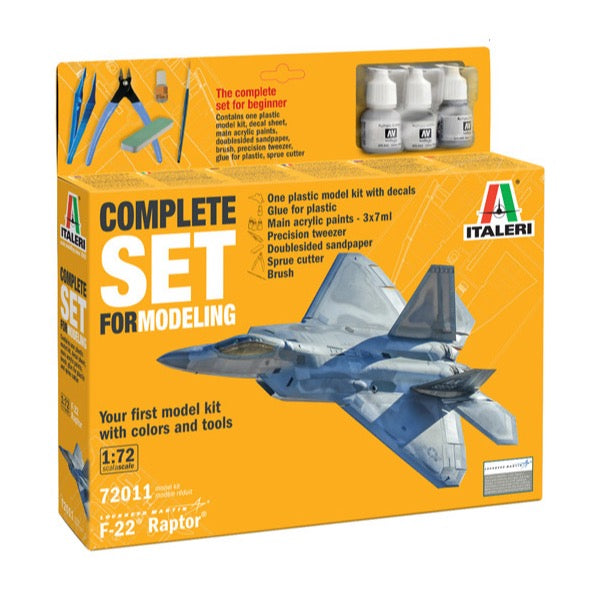
Italeri 72011 1/72 F-22 Raptor - Complete Set - includes tools and paints
25.00
$
<h3>The complete starter kit for beginner</h3>
<p>The Lockheed Martin-Boeing F-22 is a 5th generation USAF stealth fighter aircraft. Extremely innovative in concept and design, the “Raptor” is equipped with two Pratt & Whitney F119 turbofan engines, with afterburners capable of generating vector thrust via its exhaust nozzles. The "stealth" capability is provided through the aerodynamic profile and the use of "hi-tech" materials capable of minimizing radar detectability. Evasion capability is further aided by detailed design engineering of the air intakes and exhausts to reduce heat generation from exhaust gases and also noise emission reduction. The air-to-air and air-to-surface armament systems are installed in loading bays within the fuselage in order to further minimize radar detection. The aircraft avionics are extremely advanced and able to detect, track and acquire targets even at long range.Contains</p>
<h3>Contents</h3>
<ul>
<li>One plastic model kit with decals</li>
<li>Glue for plastic - Main 3 acrylic paints ( 7ml )</li>
<li>Brush</li>
<li>Precision tweezer</li>
<li>Doublesided sandpaper</li>
<li>Sprue cutter</li>
<li>Decals for one version</li>
</ul>
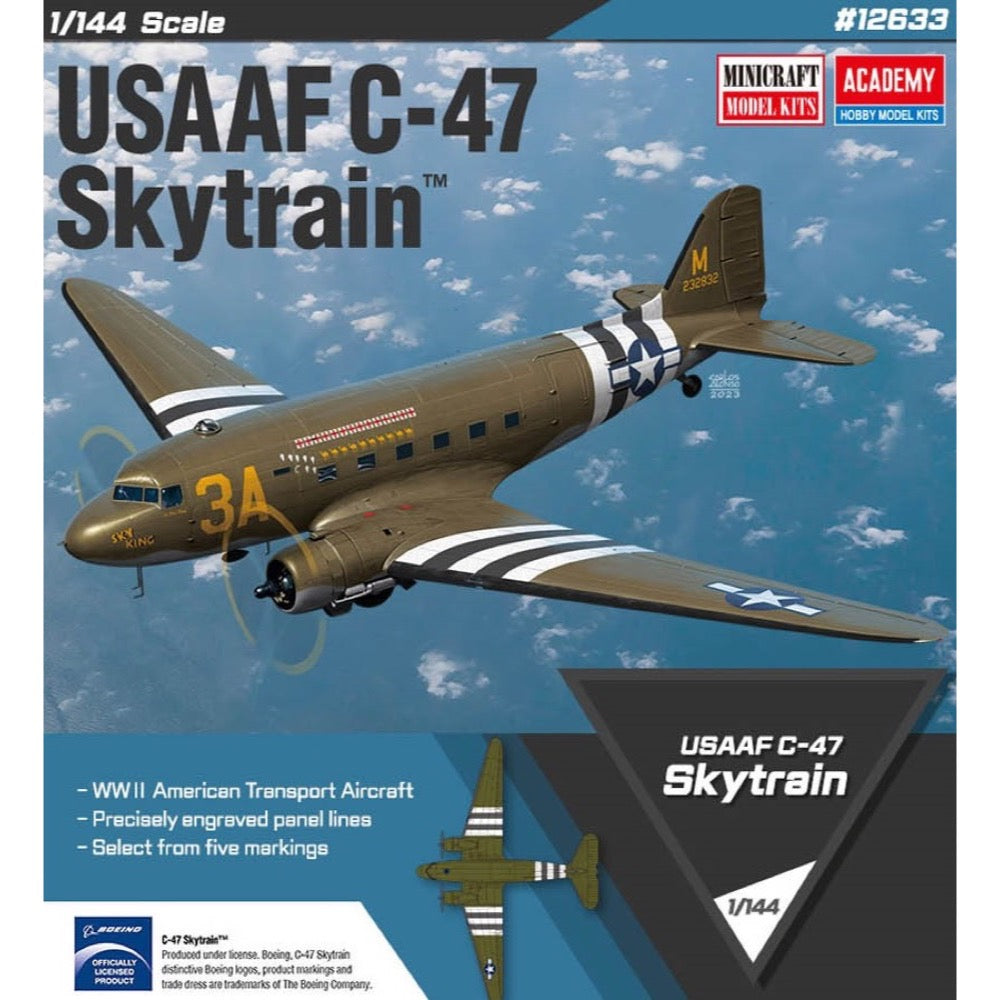
Academy 12633 1/144 USAAF C-47 Skytrain
10.00
$
<p>The Douglas C-47 Skytrain (or Dakota) is an American twin-engine, all-metal transport aircraft from the Second World War. It was a very successful military adaptation of the Douglas DC-3 aircraft. The test flight of the C-47 prototype took place on December 23, 1941. Serial production started in January 1942, which ended with the production of over 10,000 copies of this aircraft by the end of 1945. The basic power unit were two Pratt-Whitney R-1830-92 engines with a power of 1200KM each. A dozen or so versions of the C-47 were created, of which the A version (reinforced cabin, 24V electrical system in the plane) and B (more powerful engines) were produced on the largest scale. The C-47 fought on all fronts of World War II as a transport plane, evacuation of the wounded, specialist for paratroopers or towing gliders. These aircraft were also exported to the USSR under the Land-Lease Act, and the Soviet Union itself built over 6,000 under license in 1939-1952 (as Li-2). After 1945, the planes were massively "civilized", becoming the most popular passenger and transport plane in the world. Technical data: Maximum speed: 326 km / h, speed of climb: 5.7 m / s, maximum ceiling 7170 m, maximum range: 2400 km.<br><br>Licensed by Boeing.</p>
<p>This is an injection-plastic jet aircraft model kit.</p>
<h3>Includes</h3>
<ul>
<li>Choice of 5 markings:
<ul>
<li>USAAF C-47 42-32832 "Sky King", 53rd Troop Carrier Sqn, June 6th 1944;</li>
<li>USAAF C-47 42-92847, 87th Troop Carrier Sqn, 438th Troop Carrier Group, June 6th 1944;</li>
<li>USAAF C-47 42-32836 "Smilin Jack", 903rd Medical Air Evacuation Transport Sqn, 1943;</li>
<li>ROKAF C-47 "CODE ONE" 1953;</li>
<li>RAF Dakota Mk I KG496, 267 Pegasus Sqn, Desert Air Force, Egypt 1942.</li>
</ul>
</li>
</ul>



